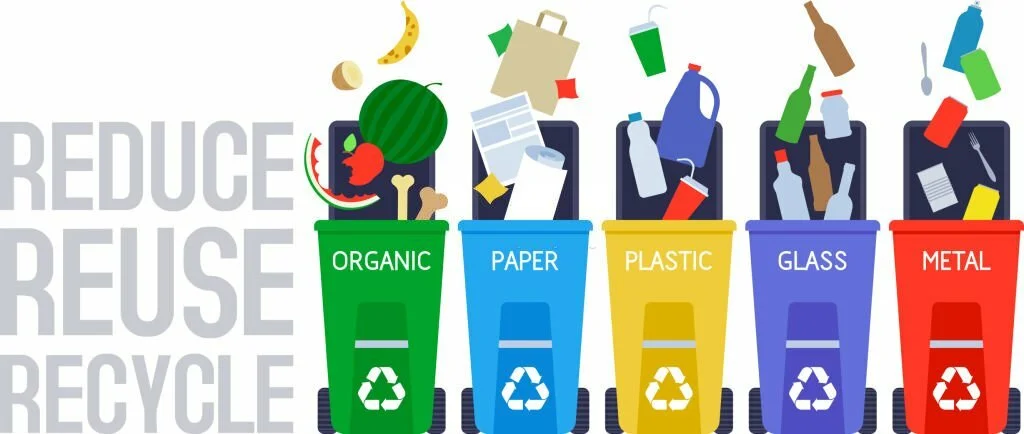Table of Contents
We let people know why it is important to separate plastic and glass containers inside recycling bins so that recycling does not get mixed, hence, ineffective. Many people throw everything into one bin. This is a problem later on. Separation helps centres to work better.
If we mix plastic with glass, we may break the glass or melt the plastic wrong. Here is how to do it right. Keeping plastic items in a separate bin indeed helps keep them sorted and easy. This simple step enhances the success of recycling – carry on reading to find out tips and reasons.
Why Separate Plastic and Glass Containers?
We separate plastic and glass to avoid contamination. Glass shards can stick to plastic during sorting. This ruins batches of recycled material.
Contamination lowers the value of recyclables. Clean loads fetch higher prices at facilities. We help the environment by keeping them apart.
Recycling plants use machines to sort items. Mixed bins jam these machines often. Separate bins make the process smooth and fast.
Benefits of Proper Recycling Separation
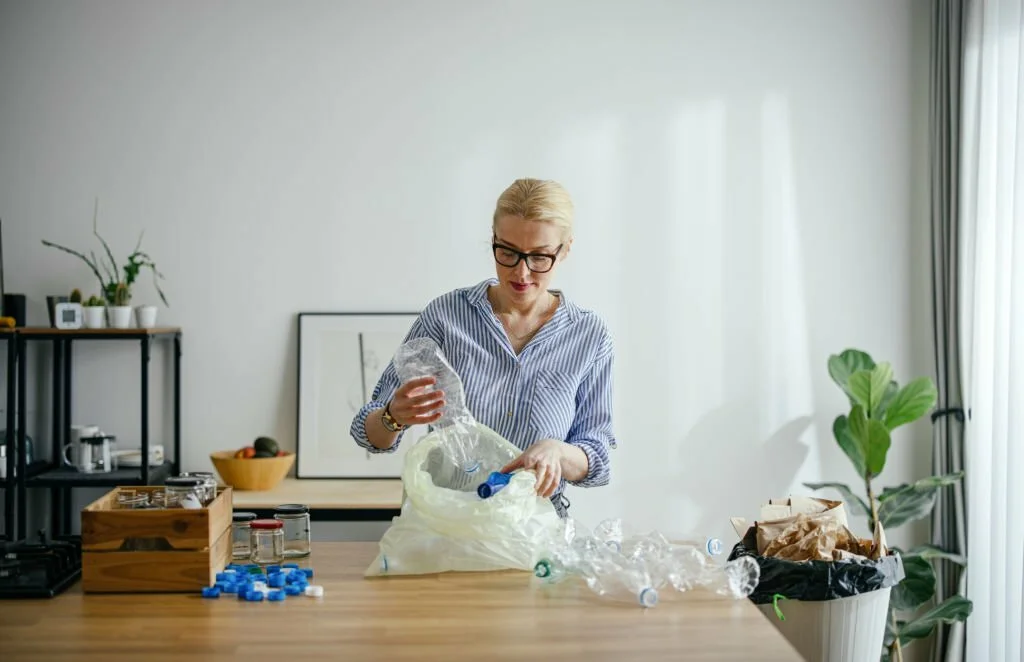
Cleaner communities are a byproduct of accurate segregation. Much less waste makes its way to the landfills, saving space and cutting down pollution Effective recycling also saves energy. It takes less power to make new glass out of recycled glass, And the same is true for plastic products. We support jobs in the recycling sector, which is great. Clean materials mean more work for sorters. Local jobs mean that the community flourishes.
Common Mistakes in Recycling Bins
Glass plastic Mixing of plastic bottles with glass jars often results in broken glass within plastic loads. Workers then discard the whole batch Another mistake is ignoring the labels on bins. Some containers explicitly state ‘plastic only’ for a clear reason.
These signs should be read and obeyed. Rinse bins if you forget to rinse containers. Food residue left on containers will attract pests and will dirty other items it comes in contact with. Always rinse before you bin.
How to Identify Plastic and Glass Items
Look for symbols at the bottom of the containers. Plastic ones bear a number inside a triangle. Glass often bears no mark but appears quite weighty. The first one will fold when squeezed, the second will stay rigid, and it’s likely to shatter.
We check these properties with respect to the right sorting. Many of them are just water bottles or yoghurt cups. The jars and bottles for drinks are glass; be able to tell the difference so that you do not place glass where you should be placing plastic. An amazing post to read about how many pallets fit on a 40′ container
Step-by-Step Guide to Separating Containers
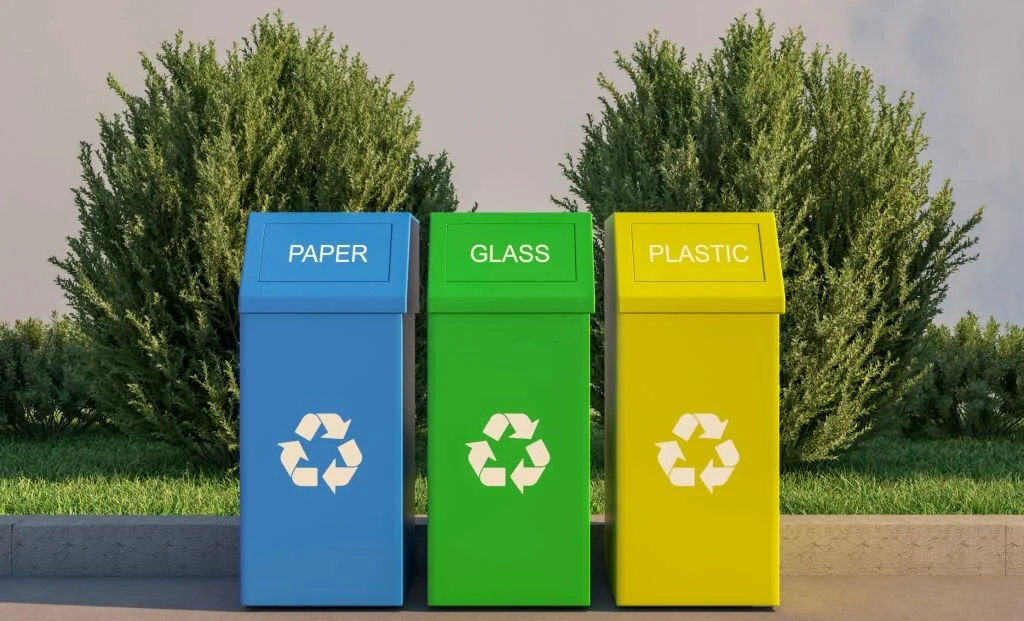
First, all your recyclables get corralled into one spot. Just take a couple of minutes to sort them into plastic and glass piles. Rinse each item under water. Remove caps and labels if you can. Dry them; otherwise, they are bound to develop mould in the bins. Put plastics in the blue bin generally. Glass in the green one. Verify local rules about bin colours.
Local Recycling Rules You Should Know
Rules vary by municipality. Some places require sorting at the curb, while others have drop-off facilities. We ended up calling the local garbage collection service to ask. They give free handouts on what to separate, so follow those directions to avoid getting hit with fines. In many regions, for instance, plastics 1 and 2 will be taken up by all the centres. Glass should be sorted by clear and colored as specified. Always confirm with the relevant authorities.
Environmental Impact of Mixing Materials
Mixing plastic and glass harms wildlife. Contaminated recyclables end up in oceans. Animals mistake them for food.
We reduce greenhouse gases by recycling right. Proper processes cut down on new material production. This fights climate change.
Landfills overflow with mixed waste. Separating extends their life. We protect natural spaces for future generations.
Economic Reasons to Separate Bins
Causing harm to wildlife, as recycling ends up being contaminated before it finds its way to the oceans, where animals mistake it for food and ingest it. Recycling helps decrease greenhouse gases. The better processing of materials helps cut down the production of new materials and hence is a front against climate change. Mixed waste overflows from landfills. Separating wastes will add life to them. The natural spaces are preserved for future generations.
Health and Safety Concerns in Recycling
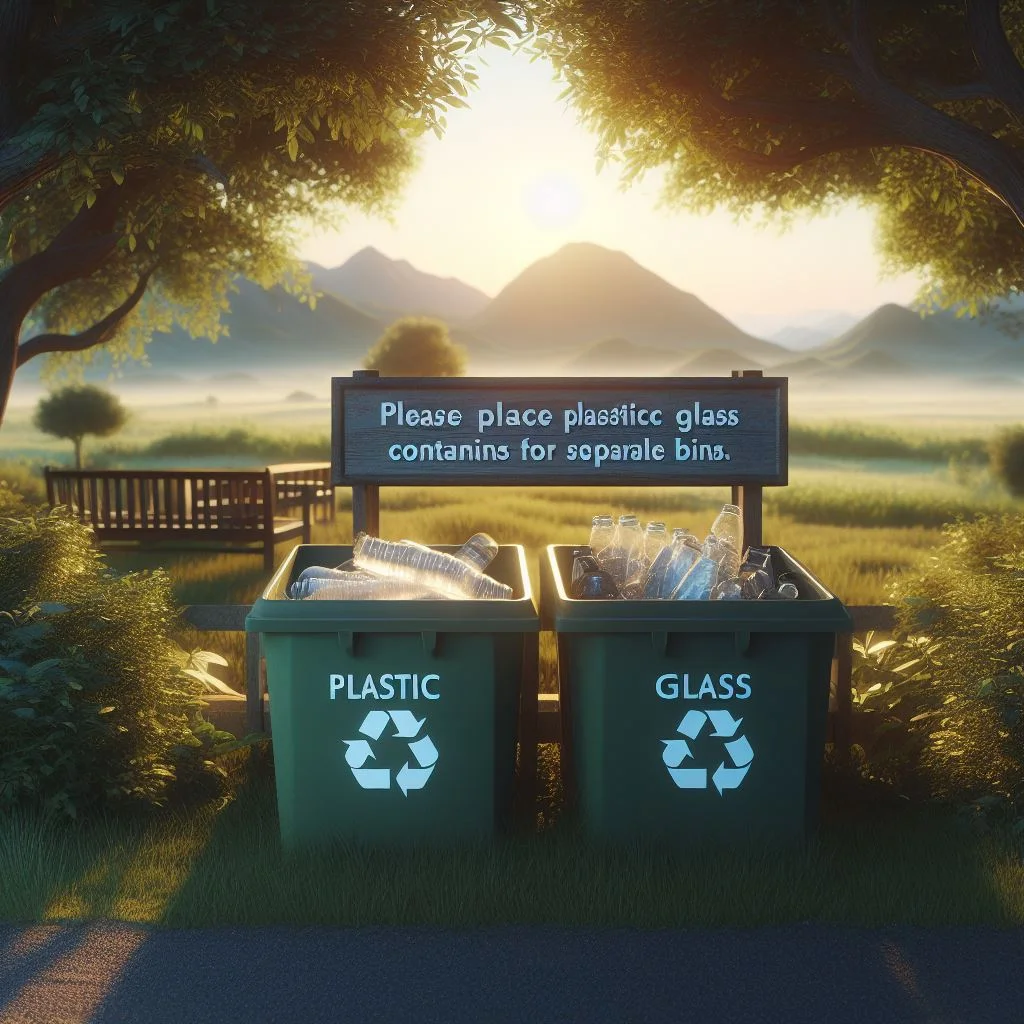
Broken glass in plastic recycling bins can easily injure workers, while sharp edges can cut down hands during handling; we avert this through proper separation. Contaminated recycling bins can spread germs as the leftover food in them tends to breed bacteria; proper separation acts as everyone’s safeguard. Pests like rats make their home in mixed bins and from there transport disease to neighbourhoods. Sensible habits would put an end to this.
Tools and Tips for Easy Separation at Home
Bins should be labelled in the kitchen. One for plastic, another for glass. This sort must become using. Purchasing a recycling organizer that comes with sections and can slide under the sink or in garage placements is recommended, especially using sturdy materials. Educate youngsters about segregation early:
- Community Events: Then join local clean-up drives. Education Resources: Read free online guides.
- Let it be a game that can be enjoyed. Families that recycle together, recycle better.
- Bin Labelling: Print clear stickers for each bin.
- Designated Sort Area: Create a designated sort area located near the trash.
- Reminder Apps: For this, use phone alerts for pickup days.
Recycling Plastic Containers Effectively
There are many types of plastic, but they all revolve around bottle and jug forms first. Plastic should be placed in the correct bin to be melted down. The facility heats the plastic into pellets, out of which new things are made, say bags. The separation makes pure pellets. Do not bag your recyclables. Loose items sort more easily. We flatten bottles to save space.
Handling Glass Containers Safely
Fragile material. Carefully rinse, remove lids and bin. Do not throw roughly that may lead to cracks. At recycling plants, glass is crushed into cullet, which, when melted, is transformed into new glass products. The cleaner the glass, the better the cullet it makes. Separated sometimes by colored glass sorts. Please make sure your locality sorts colours. We follow the rules for the best results.
Innovations in Recycling Technology
Material sorting robots armed with lasers identify plastic from glass at a very high speed. This ushers in enhanced efficiency going forward. Recycling habit tracking apps now remind you about bin segregation. It is technology that will make us do better. Robots pick things in factories. They cut down human error while sorting. Innovations make recycling smart.
Community Programs for Better Recycling
Promoting Workshops of Community Programs in Recycling, Better Habits are built through attending workshops in which experts provide tips. A waste education program should be incorporated into the school curriculum with initiatives like plant field trips, so that the foundation for change is laid at a tender age. Special focus collection drives are led by volunteer groups for plastic and glass. Join them in adding to the difference.
Challenges in Urban Recycling
Space is a major challenge in cities for the bins. Most apartments do not have enough space. We can install compact sorters to help. High population leads to high waste production because people are too busy to separate it properly.
People forget to separate waste when in a hurry. Slow down to do it right. The population in some cities contributes to the concentration of pollution and contamination. Heads of local government should allocate funds for these programs.
Rural Areas and Recycling Access
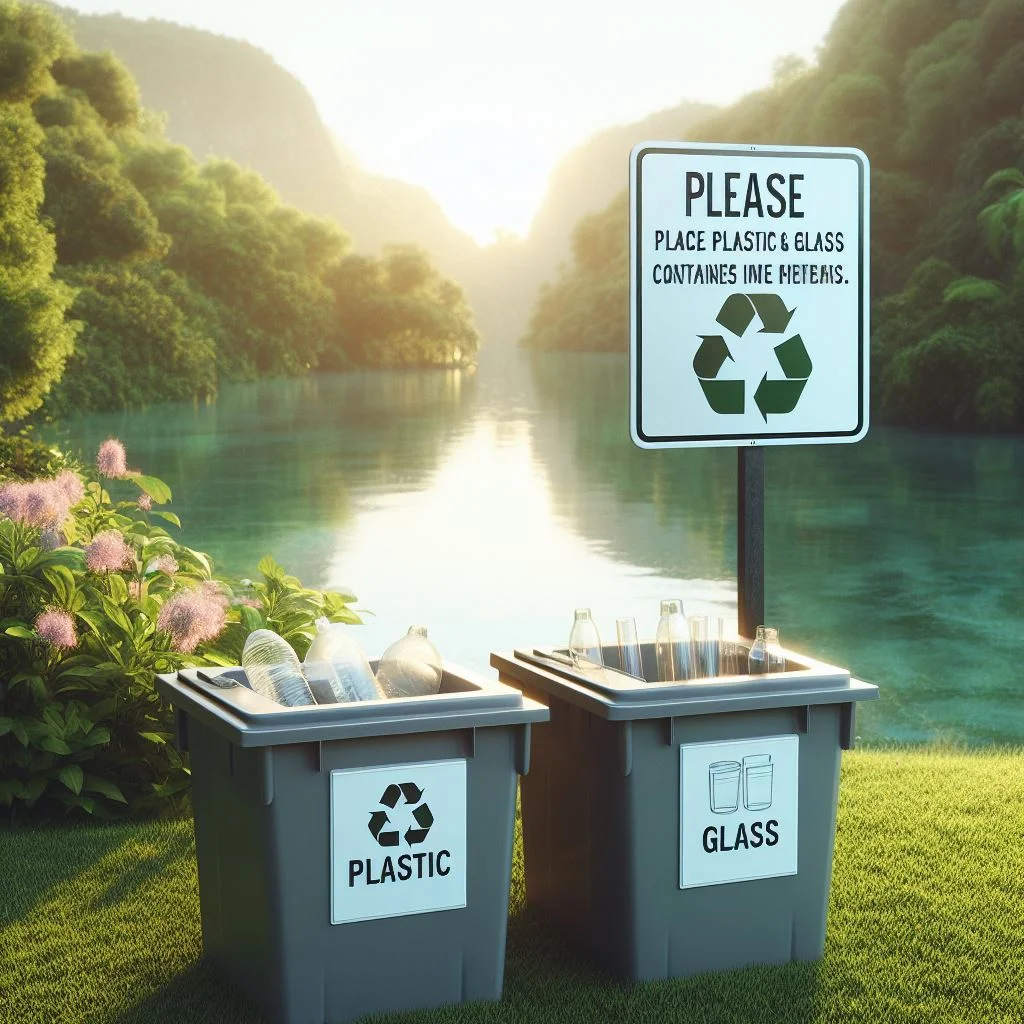
Farms have fewer pickup services, so a long drive to centres for drop-off. Trips have to be preplanned for separation, being far away. Distant habits are hard to break. Bins stack up over a week’s distance. We came to deal with the organisation. Share transportation for recyclables in communities. It’s easier as a group to do it. Separate to contribute.
Global Perspectives on Separation
Some countries, for example, Germany, are front runners in recycling, they fine for mixed bins, and it is from them we learn. Plastic waste is presently the focus in Asia. Separation programs are school-based. Global trends are pushing us forward. Certain plastics are banned in Europe. Glass is mostly reused there. We always embrace global best practices.
Future of Recycling Guidelines
Further segregation guidelines. More bins in public areas. Let’s brace ourselves for the change. Home sorting would be automated by technology; materials would be detected by smart bins. The future appears innovative and green. Education is the key to success. Spread knowledge to friends. We all play a part.
Final Thoughts
Separating plastic from glass containers in recycling bins is very important to prevent contamination and ensure recycling, which would otherwise be so ineffective. This is a practice that will benefit all of us. Begin today for a better tomorrow. Small steps will be impactful. Have plastic go to its bin. We need to start joining in right now.
FAQs
What are the advantages of plastic containers over glass containers?
Plastic boxes are typically lighter, greater durable, and much less pricey than glass containers. They are also greater proof against breakage, making them an amazing choice for storing meals and drinks with the purpose of being transported or stored in tough conditions.
Why are glass containers not as popular these days?
Glass bins are nonetheless used for some merchandise, such as wine and beer bottles, however, they are not as famous as they as soon as have been. This is due to the reality that plastic packing containers are lighter, more long-lasting, and much less expensive.
What is the difference between glass and plastic containers?
Glass and plastic containers are both commonly used for storing food and beverages. However, there are some important differences between the two materials.
Which container is best glass or plastic?
The choice between glass and plastic containers depends on the specific product and intended use. For items requiring chemical inertness, heat resistance, and recyclability, glass is preferred. For lightweight, durable, and cost-effective options, plastic is suitable. Consider the product’s properties, usage, and environmental impact when making a decision.

